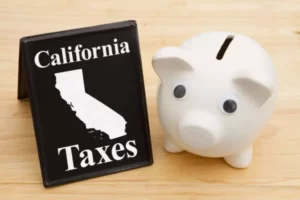Content

In addition, these tools ensure the authenticity of a company’s books at the year’s end. Prepaid expenses represent payments made in advance for products or services expected to be received at a later date. They denote a benefit that is due to the company in the future. Prepaid expenses are recorded as an asset on a company’s balance sheet because they represent future economic benefits.
Paying upfront can help you avoid the rising cost of goods and services, receive a discount, and take advantage of tax deductions. After her payment is recorded, Jill will then need to record the legal expense each month until the retainer is used and the Prepaid Legal Fees account has a $0 balance. The first step in recording a prepaid expense is the actual purchase of the expense. For example, if you pay your insurance for the upcoming year, you would first pay the expense, making sure to record it properly.
What are Prepaid Expenses?
Recording an advanced payment made for the lease as an expense in the first month would not adequately match expenses with revenues generated from its use. Therefore, it should be recorded as a prepaid expense and allocated out to expense over the full twelve months. Due to the nature of certain goods and services, prepaid expenses will always exist. For example, insurance will always be a prepaid expense as it provides financial protection in the event of any unfortunate incident in the future.
- All assets provide certain utilities, and prepaid insurance as an asset affords companies the benefit of an insurance coverage.
- Failure to adjust these expenses accurately leads to the account balance remaining the same, which overstates the value of any prepaid expenses as an asset.
- As the benefits of the prepaid expenses are availed over time, they are recorded in the income statement.
- So we have a pre paid rent balance of 8000 and our rent expense.
- As the benefits of the good or service are realized over time, the asset’s value is decreased, and the amount is expensed to the income statement.
- Transform your accounts receivable processes with intelligent AR automation that delivers value across your business.
If the prepayment covers a longer period, then classify the portion of the prepaid insurance that will not be charged to expense within one year as a long-term asset. Prepaid insurance is commonly recorded, because insurance providers prefer to bill insurance in advance. If a business were to pay late, it would be at risk of having its insurance coverage terminated. The adjusting journal entry is done each month, and at the end of the year, when the insurance policy has no future economic benefits, the prepaid insurance balance would be 0. Prepaid expenses usually provide value to a company over an extended period of time, such as insurance or prepaid rent. Many types of business insurance are paid as a lump sum in advance of a specific coverage period.
Examples of Prepaid Expenses
As future invoices come in, the company would recognize an expense and draw down the prepaid asset by the same amount. Because of how certain goods and services are sold, most companies will have one or more prepaid expenses. For example, the purpose of insurance is to buy proactive protection for the future. No insurance company would sell insurance that covers a past event, so insurance expenses must be prepaid by businesses. Prepaid expense amortization is the method of accounting for the consumption of a prepaid expense over time. This allocation is represented as a prepayment in a current account on the balance sheet of the company. The process of recording prepaid expenses only takes place in accrual accounting.

Therefore, the prepaid insurance journal entry portion of this insurance will be shown as an asset on the company’s balance sheet. Let’s say your insurance coverage for the entire year costs $24,000. Create a journal entry to debit this amount under the prepaid insurance account. Amortization is an accounting technique that helps you account for the consumption of a prepaid expense over a period of time.
Accounting Process for Prepaid or Unexpired Expenses
Prepaid expenses are the current assets that are paid in advance by a business in exchange for goods or services that will be provided in the future. Prepaid Expense AccountPrepaid expenses refer to advance payments made by a firm whose benefits are acquired in the future. Payment for the goods is made in the current accounting period, but the delivery is received in the upcoming accounting period. Understanding how prepaid expenses actually work can help you record and calculate them accurately for the balance sheet and income statement. Immediately expensing prepaid expenses can cause profits to fluctuate, making performance benchmarking over a period of time difficult. Failure to adjust these expenses accurately leads to the account balance remaining the same, which overstates the value of any prepaid expenses as an asset.
- When a company pays a retainer, it is recorded as a prepaid expense on the balance sheet.
- It is based on the accounting equation that states that the sum of the total liabilities and the owner’s capital equals the total assets of the company.
- The right financial statement to use will always depend on the decision you’re facing and the type of information you need in order to make that decision.
- Prepaid expenses are considered current assets because they are expected to be utilized for standard business operations within a year.
- The content is not intended as advice for a specific accounting situation or as a substitute for professional advice from a licensed CPA.
- This copier benefits your company for the whole year, instead of a month or a quarter which is generally the accounting period.
Debit the Expense account and credit Prepaid Expenses for the appropriate percentage of the total payment (1/6 if 6 months, ¼ if quarterly for a year). In December, you will record the journal entry one last time. This final entry will close out your Prepaid Insurance balance to $0, while your Insurance Expense for the year will be $12,000. The spreadsheet would continue through December, displaying the amount that will need to be expensed each month.
What Are Prepaid Expenses and How to Record Them Properly
BlackLine solutions address the traditional manual processes that are performed by accountants outside the ERP, often in spreadsheets. To respond and lead amid supply chain challenges demands on accounting teams in manufacturing companies are higher than ever. Guide your business with agility by standardizing processes, automating routine work, and increasing visibility.
Is prepaid insurance a debit or credit?
Generally, Prepaid Insurance is a current asset account that has a debit balance. The debit balance indicates the amount that remains prepaid as of the date of the balance sheet.
As the good or service is delivered, the asset’s value is decreased, and the amount is expensed to the income statement. Prepaid expenses reflect the cost of assets whose benefits will be realised later during future accounting periods. Each time the asset gets used for its value, a portion of its cost also gets deducted from the total cost that was first denoted in the books. Hence, prepaid expenses help to reflect costs of assets accurately in the company’s financial statements. A business buys one year of general liability insurance in advance, for $12,000. The initial entry is a debit of $12,000 to the prepaid insurance account, and a credit of $12,000 to the cash account.

0 Responses to What Are Prepaid Expenses?